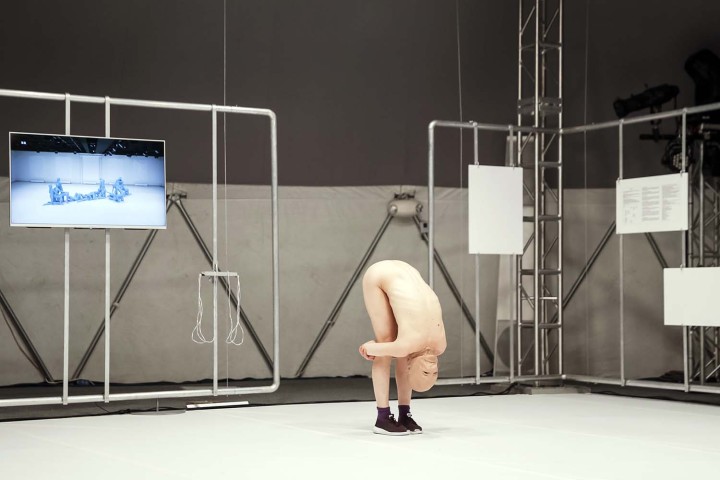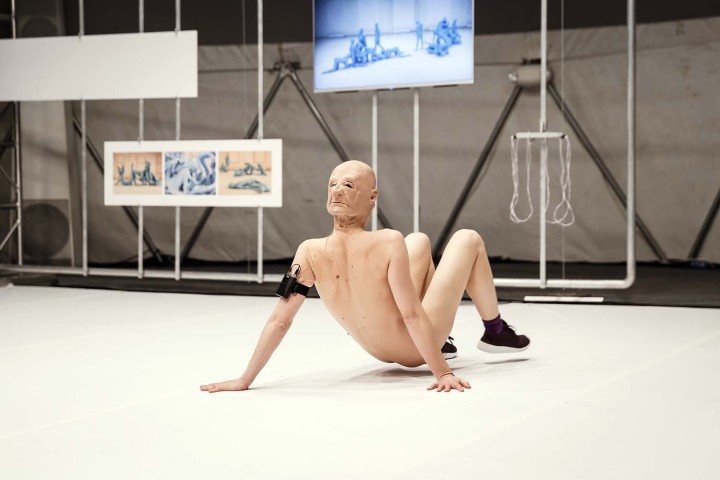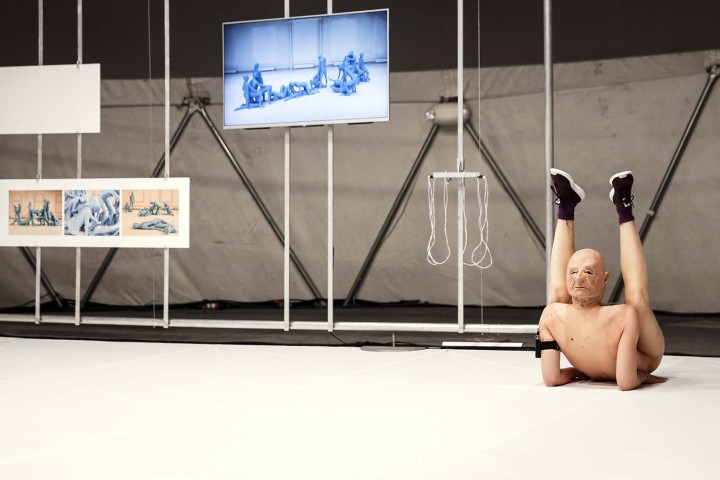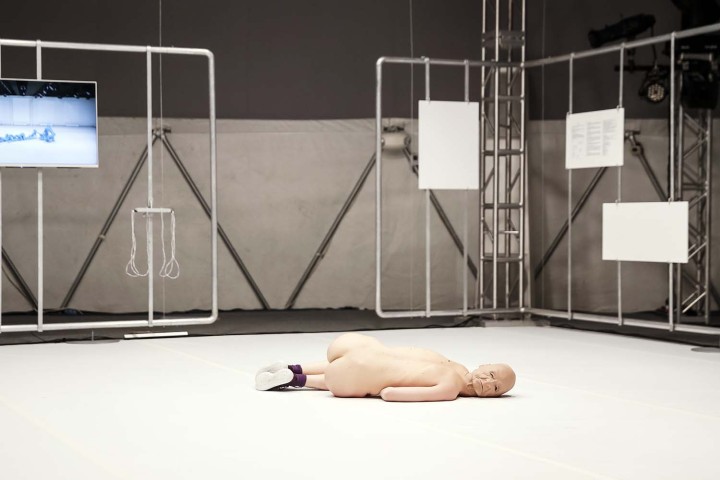At the beginning of Mette Ingvartsen’s 69 Positions, the audience enters an open, steel-tube cage lined with various performance documentation from the 1960s. Dressed in a long maroon shirt, jeans, and matching Adidas trainers, Ingvartsen gathers us around her.
This will be a journey, she says like an expert docent, from unresolved histories of the body to a future proposition for sexual and participatory politics. The succinct introduction concludes with Carolee Schneemann’s email response to Ingvartsen’s request to recreate Meat Joy (1964), using the original performers. Our ecstasy was a response to the political anguish of Vietnam, Schneemann writes. Don’t limit yourself; find what bodies, old and young, mean today.
Throughout the three-part performance essay, Ingvartsen plays multiple personas simultaneously, creating an intimate sphere between sex, history, and ideology that is activated by bodies, hers and ours. In her deconstruction of The Performance Group’s Dionysus in ’69 (1970), she bounces throughout the space with spontaneous rapture. Her running commentary pokes fun at the anarchic performance, adding candor to her invitation to join. Ingvartsen is disarmingly capable as both playful mischief-maker and pedagogue, and as she strips down to her trainers, a nearby monitor reveals that her re-performance is an expert homage to the orgiastic original.
Except for her sneakers, Ingvartsen remains naked for the remaining two acts. Standing in front of a monitor playing her performance 50/50 (2004), she twerks while lucidly explaining that the goal of go-go dancing is “haptic vision,” which synthesizes touch through sight. Next, she explores erotic socialization, building an “orgy sculpture” around herself. It was not easy to discern what anyone felt while Ingvartsen gently conducted four people through close-range pantomimes of tongue-to-clit, finger-to-butt, mouth-to-ear, and sundry other more and less intense comings-together. In this palpably exciting, open, messy, and hypersensitive moment, Ingvartsen builds trust—rather than merely suspending disbelief—by embodying different power positions. If desire doesn’t belong to the individual, but rather to the social, she says, then it only exists through human relations, and is therefore a political agent.
In 69 Positions’ final act, Ingvartsen tours us through contemporary and historic fetishes. Bondage and mummification, electronic or musical stimulation, the molecular gender-hacking of testosterone gel—Ingvartsen uses these sexual practices—and texts, speech, histories, sneakers, etc.—to sublimate the boundaries between private desires. It is against this exploratory sexual space that we can judge her thesis, that politics is contingent on how we share the public body.







